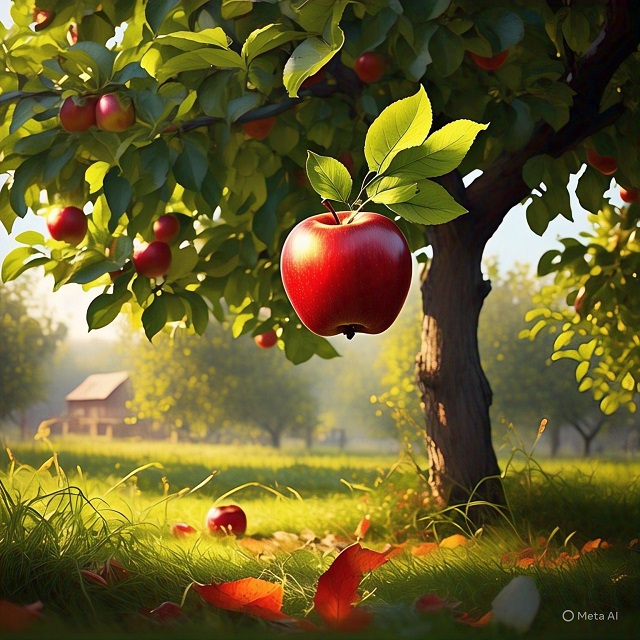Have you ever wondered what is gravity and why things fall to the ground? Whether it’s an apple dropping from a tree or the Moon orbiting Earth, gravity is behind it all. In this blog, we’ll explain what is gravity in simple terms, explore how it works, and understand why it’s so important for life and the universe.
Table of Contents
What is Gravity?
So, what is gravity exactly? Gravity is a natural force that pulls objects toward each other. Every object in the universe has mass, and mass creates gravity. The more massive an object is, the stronger its gravitational pull. For example, Earth’s gravity pulls everything toward its center, which is why we stay grounded and don’t float away.
When people ask what is gravity, they are usually trying to understand why things fall or why planets orbit the Sun. The answer is simple — it’s because of gravity.

The History Behind Gravity
The first major explanation of what is gravity came from Sir Isaac Newton in the 1600s. After watching an apple fall from a tree, he developed the Law of Universal Gravitation, which explains that all objects in the universe attract each other with a force that depends on their masses and the distance between them.
Later, Albert Einstein expanded our understanding of what is gravity through his Theory of General Relativity, where he described gravity not as a force, but as the warping of space-time by mass. This helped explain more complex phenomena like black holes and time dilation.
Why is Gravity Important?
Knowing what is gravity helps us understand many things we take for granted. Without gravity, life on Earth wouldn’t be possible. Here’s why:
- Gravity keeps our feet on the ground.
- It holds the atmosphere in place so we can breathe.
- It allows oceans, rivers, and lakes to exist.
- It causes the tides (due to the Moon’s gravity).
- It keeps planets in orbit around the Sun.
- It forms stars, planets, and galaxies.
Understanding what is gravity shows us just how essential this invisible force is for the stability of our universe.
How Does Gravity Work?
Now that we know what is gravity, let’s look at how it works. The strength of gravity depends on two things:
- Mass: The bigger the object, the stronger the gravity.
- Distance: The closer two objects are, the stronger the pull between them.
This is why Earth has more gravity than the Moon, and why astronauts feel “weightless” in space — they are far from the source of strong gravitational pull.
Everyday Examples of Gravity
Once you understand what is gravity, you’ll start noticing it everywhere. Here are some examples:
- A ball falling when you drop it.
- Water flowing downhill.
- A satellite orbiting the Earth.
- You staying on the ground instead of floating.
All these things happen because of gravity.
Gravity in Space
A common question is: if astronauts float in space, is there no gravity? Understanding what is gravity clears this up. There is gravity in space — it’s just weaker the farther you go from a planet or star.
Astronauts experience something called microgravity. They’re actually falling around the Earth, but because they’re moving fast enough, they keep missing it. That’s why they float.
Also, what is gravity in space without planets? Even in empty space, gravity from nearby stars or galaxies can affect the motion of objects.
Fun Facts About Gravity
- The Moon’s gravity is only 1/6th that of Earth’s.
- Black holes have such strong gravity that not even light can escape.
- Without gravity, time would not flow the same way — it slows down near strong gravitational fields.
- The Sun’s gravity keeps all the planets in orbit.
Learning what is gravity opens up a world of fascinating science and space exploration.
Can We Live Without Gravity?
Absolutely not. Once you know what is gravity, you’ll understand how vital it is. Without gravity, we couldn’t:
- Stand or walk normally.
- Keep air and water on Earth.
- Build stable homes and structures.
- Keep satellites and space stations in orbit.
Even our sense of direction would be lost without gravity pulling us “downward.”
Conclusion
To wrap it up, what is gravity? It’s the force that holds everything together — from our coffee cups on the table to the planets circling stars. Knowing what is gravity not only answers one of the oldest scientific questions, but also helps us understand how the universe works.
So the next time you drop your phone or gaze at the stars, remember that gravity is always in action — silent, invisible, but essential.
Do you want to read more about science? check this out: Easy Science Experiments for Kids
